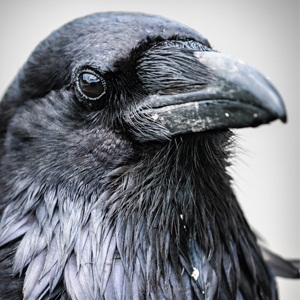
A species of crow native to islands east of Australia has long wowed scientists with its intelligence, and now it has shown it can solve at least one puzzle as well as the average seven-year-old child, scientists reported.
Like other research on the cognitive abilities of non-human animals, the study sheds light on the evolution of intelligence and whether disparate cognitive capacities develop in lockstep or at radically different rates between species. The results suggest that an understanding of cause and effect evolved fairly early.
By studying the cognitive abilities of other animals, "we can assess the factors which may have led to the evolution of different cognitive mechanisms, in particular the flexible problem solving, or intelligence, that we find in certain groups in the animal kingdom," said biologist Sarah Jelbert of the University of Auckland, who led the research.
"Understanding this could in turn help us to piece together the evolution of cognition in our own species."
Read: The science of intelligence
Crows challenged by scientists
For the new study, published in the scientific journal PLoS ONE, scientists captured six New Caledonian crows (Corvus moneduloides) from Grande-Terre, part of the archipelago of New Caledonia.
This species is the only non-primate that makes tools in the wild. The birds break off twigs and trim them, and tear off barbed leaves to use as hooks to dig for insects. In the lab, they have bent wires to retrieve out-of-reach food.
The scientists challenged the crows with a task inspired by an ancient Greek fable by Aesop known as the "Crow and the Pitcher", in which a thirsty crow confronts a pitcher whose water level is too low for it to reach and so drops in stones to raise the level.
Results of the training
After training the crows to pick up stones, Jelbert and her colleagues challenged them with different Aesopian setups in which cubes of meat attached to corks were in transparent tubes, too deep for the crows' beaks to reach.
The birds shined. Presented with two tubes, one partially filled with sand and the other partially filled with water, the crows wasted little effort dropping stones into the sand. Instead, 76% of their tries were on the water-filled tube.
Given a choice of dropping rubber (which sinks) or polystyrene (which floats) as well as hollow or solid objects into water-filled tubes, the crows opted for the water-raising rubber and solid objects on nearly 90% of their tries.
Presented with narrow and wide tubes with water at equal heights, however, they opted to drop water-raising objects into the wide tube much more often – a less efficient though ultimately effective strategy. It took seven deposits to get the meat from the wide tube but two for the narrow tube.
Brave: A brave crow sits on a falconer's glove
Read: 4 fascinating animal facts
Grasp of physics
In their understanding of physics – how objects displace water – the crows were comparable to 5-to-7-year-old children, the researchers said. In particular, the crows seemed to understand the different effects of hollow and solid objects, the first time a study had shown that.
Research in animal cognition is shifting from what Jelbert called "gee-whiz studies, which just look at whether animals can pass clever-looking tasks", to an approach where the patterns of success and failure offer clues to what cognitive mechanisms are at work.
The Aesop's fable studies have "yielded some fascinating results", said Amanda Seed of the University of St. Andrews in Scotland and an expert on animal learning. "The combination of success in some conditions and failure in others is particularly helpful for homing in on the cognitive mechanisms involved."
In this case, the birds' successes showed that they understood causal relationships between actions, a key feature of human cognition. But their failures were also revealing.
Muffed tasks
The task the crows muffed involved three tubes: one with a floating cube of meat, one connected out of sight (under the table) to the first, and one unconnected tube. The winning strategy was to drop stones into the second tube to raise the water level in the connected, treat-containing one (which was too narrow to hold stones).
Read: How animals see the world
The crows picked the useless tube and the effective tube equally often, failing to grasp how to get a treat, even after occasional successes with the "correct" tube.
Children solve the three-tube setup by around age 8.
Causal understanding
The crows' failure, however, might be evidence of their intelligence. Because they failed at a task that made no causal sense (drop stones into seemingly unrelated Tube 2 to raise water in Tube 1?) but passed the other tasks, they appear to have been using causal understanding when they were successful.
"They found the arbitrary task (dropping stones into an unconnected tube) counterintuitive," said Seed. That suggests "they formed a representation not only of what works, such as solid objects, but also why – that they displace the water level."
The study is at http://dx.plos.org/10.1371/journal.pone.0092895, including videos of the clever crows.
Image: Crow from Shutterstock
Read more:
Why whales beach themselves
Farm animals more intelligent and emotionally complex




 Publications
Publications
 Partners
Partners














